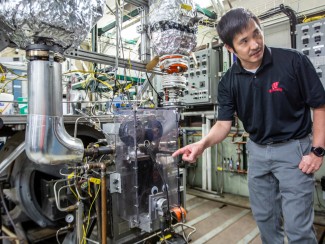
September saw Wisconsin Energy Institute researchers across the University of Wisconsin–Madison campus examining how to keep our water and air clean featured across Wisconsin, with notes on industry collaborations making waves online. Below are media coverage highlights for September.
The model lake

Isthmus
UW–Madison researchers are taking on the challenge of how modeling nutrient run-off ultimately affects water quality in Wisconsin lakes and rivers.
Featured Researchers
UW study finds surprising lack of research on how air pollution affects birds

Wisconsin Public Radio
"Even though we hear about the canary in the coal mine, when you start looking into it, we actually don’t really know about how birds are affected by air pollution," said Tracey Halloway, a professor at UW–Madison’s Nelson Institute for Environmental Studies.
Featured Researchers
Silatronix awarded Navy contract to enable safe, high stability LTO-based li-ion batteries using organosilicon electrolytes

Global Energy World
UW–Madison spinoff Silatronix was recently awarded a $1 million contract from the U.S. Navy's Office of Naval Research to expand research on a type of lithium battery that will be able to recharge far faster than the typical battery.
Featured Researchers
Researchers convert 80 percent of biomass into high-value products via new strategy

Phys.org
The three main components of non-edible plant matter can now be turned into high-value products in economically favorable yields. Using the concept of an integrated biorefinery, researchers showed how multiple products are created.
New research shows solar energy may have been undervalued

Wisconsin Public Radio
Has the future reach of solar energy been underestimated? WPR highlights new research from Greg Nemet, associate professor at UW–Madison's Lafollette School of Public Affairs and the Nelson Institute for Environmental Studies, showing it may be so.
Featured Researchers
New floors at Union South harness the energy of people walking on them

The Cap Times
When pedestrians walk over the 96-square-foot installation introduced to the building last month, it collects power from their footfalls. Xudong Wang, a materials science and engineering professor with the UW–Madison, said the prototype is an example of “roadside energy harnessing” — a type of renewable energy generation that could become a significant part of how we power our society in the future.
Featured Researchers





